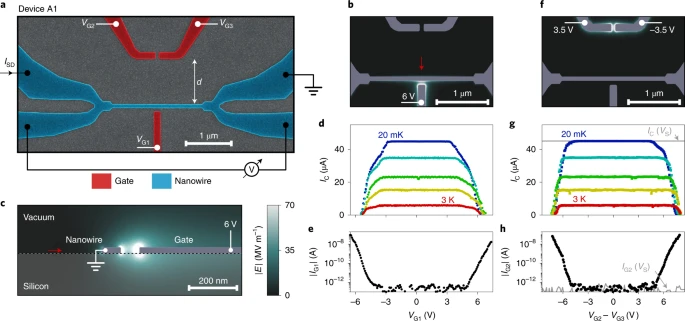Phys.org March 30, 2022
Recent experiments have suggested that superconductivity in metallic nanowires can be suppressed by the application of modest gate voltages. The source of this gate action has been debated and either attributed to an electric-field effect or to small leakage currents. An international team of researchers (Switzerland, Italy, USA – IBM, NY) has shown that the suppression of superconductivity in titanium nitride nanowires on silicon substrates does not depend on the presence or absence of an electric field at the nanowire but requires a current of high-energy electrons. The suppression is most efficient when electrons are injected into the nanowire, but similar results are obtained when electrons are passed between two remote electrodes. This is explained by the decay of high-energy electrons into phonons, which propagate through the substrate and affect superconductivity in the nanowire by generating quasiparticles. By studying the switching probability distribution of the nanowire, they showed that high-energy electron emission leads to a much broader phonon energy distribution compared with the case where superconductivity is suppressed by Joule heating near the nanowire…read more. TECHNICAL ARTICLE Open Access 1 , Open Access 2 , 3

Basic device characterization and electric-field simulation. Credit: Nature Electronics volume 5, pages71–77 (2022)